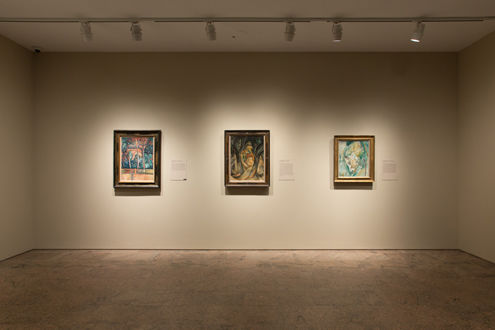
Cubism
Cubism was born just over a century ago, in the years of European conflict that led to the Great War and when established orders and ideas were being called into question. Albert Einstein's theories of relativity, Sigmund Freud's investigations of the unconscious mind, and innovative ways of seeing, from aerial views to X-rays, challenged traditional notions of reality. The barrage of words and images generated by newspapers and advertising posters dramatically altered everyday experience. Led by Georges Braque and Pablo Picasso, the Cubists sought to create new forms of artistic expression that reflected these shifts in hierarchies and perception. They did so by overturning the conventions of representation, reconceiving the depiction of three-dimensional objects on a two-dimensional picture plane. Cubism destroyed traditional pictorial illusionism and paved the way for the pure abstraction that dominated Western art for the next fifty years. Blurring the boundaries between fine art and popular culture, the Cubists were the first to incorporate strips of newspaper and wallpaper, book pages, and tobacco wrappers—the flotsam of modern life—inside the picture frame. They confounded expectations of materials and originality, changing the definition of art itself. Covering the years 1906 to 1924, the Leonard A. Lauder Collection consists of eighty-one works of art, many of which are benchmarks in the revolutionary history of Cubism.